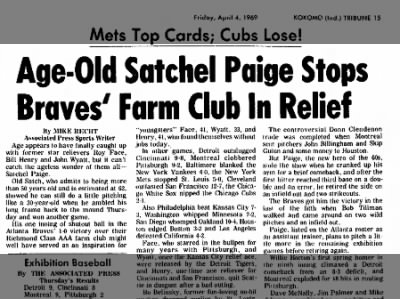Bill James wrote in his 2001 historical abstract:
Play along with me here. Take out your pen, and write down the names of ten pitchers who won 200 or more games in the majors leagues. You pick ’em– players from the forties, fifties, sixties, seventies, eighties, lefties, right-handers, American Leaguers, National Leaguers, Hall of Famers or guys who just hung around a long time. Your list.
What do all of these men have in common? I’ll tell: they were all above the league strikeout average early in their careers. Probably seven of your ten led the league in strikeouts at least once.
One of the things I enjoy about Bill James’ writing is that it has a certain timelessness to it. Now, just as it was in 2001, strikeout pitchers are highly valued in baseball. In fact, it’s extremely rare for a pitcher with any power left in his arm to not get work the next season.
Between 1901 and 2012, just five pitchers had at least 150 strikeouts their final season. [Another six pitchers who haven’t pitched this season due to injuries had 150 strikeouts in 2013, though I’m omitting them here as I assume they’ll pitch again.]
Sandy Koufax, 317 strikeouts in 1966: There’s a great story about Koufax, repeated in a 1999 Sports Illustrated retrospective. Tom Verducci wrote:
In his 50s Koufax was pitching in a fantasy camp when a camper scoffed after one of his pitches, “Is that all you’ve got?” Koufax’s lips tightened and his eyes narrowed– just about all the emotion he would ever show on the mound– and he unleashed a heater that flew damn near 90 mph.
Koufax famously quit baseball at 31 because of his arthritic left elbow. I assume after a break from playing and a reduction in his workload, something less than the obscene 323 innings the Dodgers required of him in 1966, Koufax could have pitched more years in the majors.
Britt Burns, 172 strikeouts in 1985: Just 26 his last season, Burns finished baseball at the youngest age of the men here. He won a career-high 18 games for the White Sox who dealt him to the Yankees that December. However, Burns never played for the Bronx Bombers because of a degenerative hip condition. He attempted a comeback in 1990, going to spring training with the Yankees and briefly pitching for two teams in their farm system.
Chuck Finley, 174 strikeouts in 2002: Finley went through an ugly divorce from actress Tawny Kitaen during his final season, with divorce paperwork including accusations he’d used steroids. The St. Louis Cardinals declined to resign the 39-year-old after the season ended and while Finley’s agent told the Associated Press his client intended to play in 2003, no one bit.
Mike Mussina, 150 strikeouts in 2008: Next to Koufax, Mussina might have the best final season by a pitcher in modern baseball history. After going 20-9 with 5.2 WAR and finished sixth in American League Cy Young voting, the 39-year-old voluntarily walked away.
Javier Vazquez, 162 strikeouts in 2011: Still just 38 at this writing, it’s a wonder Vazquez hasn’t pitched in three years. He’s spoken of coming back and has pitched internationally since the Marlins let him leave following the 2011 season. Vazquez never became the ace people expected though his career numbers via Fangraphs– 53.7 fWAR and 3.75 xFIP– suggest he may have been a little underrated.




